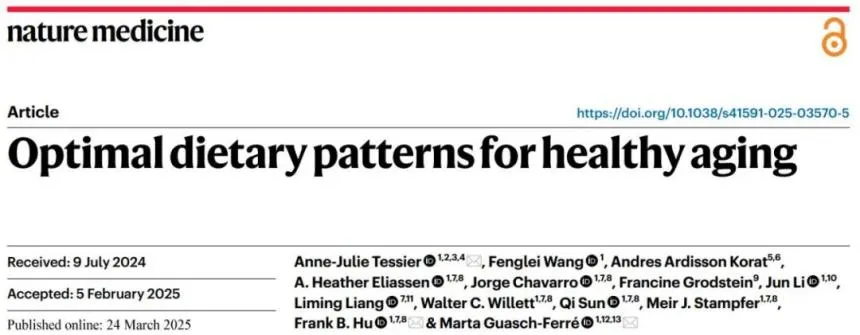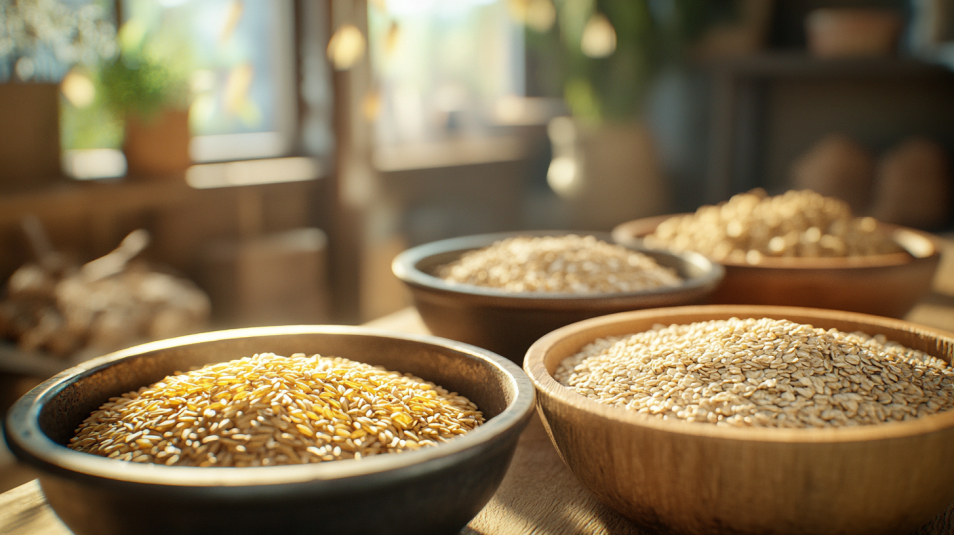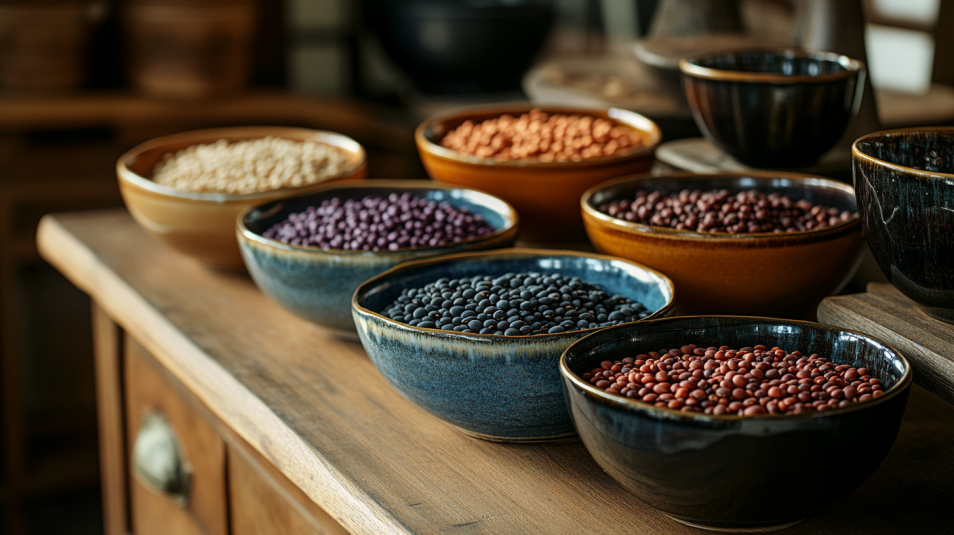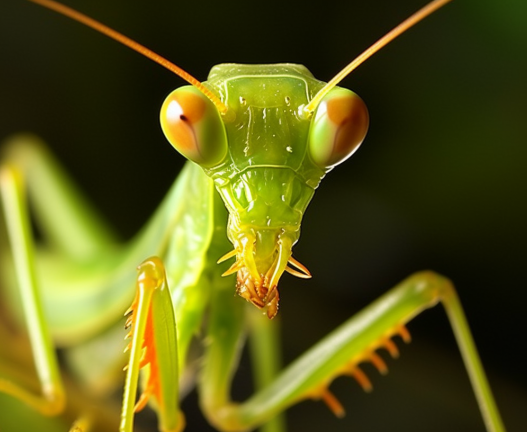Eating is a lifelong affair. As the old saying goes: “Loving food is instinct, being able to eat is a blessing, and knowing how to eat is a true skill!” Over a lifetime, we consume roughly 50 tons of food. Mastering healthy eating truly means mastering a key aspect of life!
Recently, a groundbreaking study involving more than 100,000 participants over 30 years revealed an exciting discovery: those who eat wisely are more likely to live healthily beyond 70, and even stay free from major diseases after hitting that milestone.
100,000 Participants Over 30 Years: Smart Eaters Live Healthier After 70
In March 2025, researchers analyzed decades of health data from over 100,000 people. The findings? Whether you’re plagued by diseases or vibrant after 70 heavily depends on what and how you eat.

Research screenshots
Staying healthy at 70 means maintaining cognitive function, physical ability, and mental health, while steering clear of 11 major chronic illnesses, including cancer, diabetes, heart attacks, coronary heart disease, heart failure, stroke, kidney failure, chronic obstructive pulmonary disease, and Parkinson’s disease.
The study found that those who follow a healthy eating pattern are much more likely to achieve vibrant health past 70. Across different dietary frameworks, researchers identified 7 types of foods you should eat more of—and 4 you should minimize.
7 Foods You Should Eat More Of
Fruits: Keep Them Colorful and Fresh
According to the Chinese Dietary Guidelines (2022), adults should consume 200–350 grams of fresh fruits daily. Choose a colorful variety to maximize vitamin and mineral intake:
- Purple/Blue Fruits: Mulberries, blueberries, Amazon berries, grapes—rich in anthocyanins.
- Yellow/Orange Fruits: Lemons, mangoes, oranges—packed with carotenoids and lutein.
- Red Fruits: Tomatoes, strawberries, cranberries, cherries—loaded with anthocyanins and lycopene.

Vegetables: A Must with Every Meal
Every meal should include vegetables, aiming for no less than 300 grams daily, with half being dark-colored varieties like spinach, red peppers, and carrots, which are excellent sources of beta-carotene.
Whole Grains: Upgrade Your Staples
Replace some refined grains with whole grains like brown rice, millet, oats, and barley. It’s simple: add some whole grains when cooking rice to boost fiber, magnesium, and B vitamin intake.

Unsaturated Fats: Choose Healthy Oils
Prioritize monounsaturated and polyunsaturated fats, found abundantly in olive oil, canola oil, tea seed oil, almond oil, walnuts, flaxseeds, tuna, salmon, shrimp, oysters, and seaweed. Reduce saturated and trans fats to create an anti-inflammatory environment within your body.
Nuts: A Daily Handful for Heart Health
Eating a small handful of nuts daily does wonders for your blood lipids:
- Lowering Total Cholesterol: Pistachios, almonds, walnuts.
- Reducing LDL (“bad” cholesterol): Cashews, walnuts, almonds.
- Lowering Triglycerides: Hazelnuts, walnuts.
- Raising HDL (“good” cholesterol): Peanuts.
Pick the nut that best suits your health needs and enjoy a crunchy, health-boosting snack every day!

Legumes: The Plant Protein Heroes
Incorporate legumes such as soybeans, black beans, green peas, and red beans into your meals. These superfoods are packed with dietary fiber, potassium, magnesium, and quality protein. According to the Chinese Dietary Guidelines (2022), adults should consume 15–25 grams of soybeans or equivalent soy products daily.

Low-Fat Dairy: Strengthen Your Bones
Consume 300–500 grams of dairy products daily—opt for low-fat or skimmed versions like skim milk or low-fat yogurt. Beware of sugary “milk beverages” marketed as healthy alternatives.

4 Foods You Should Eat Less Of
Trans Fats: A Dangerous Enemy
Trans fats are among the worst dietary offenders, raising “bad” cholesterol and lowering “good” cholesterol, while increasing risks of heart disease, type 2 diabetes, obesity, inflammation, and even complications during pregnancy. Major sources include margarine, fried foods, baked goods, and fast food.
Sodium (Salt): Use with Caution
Salt enhances flavor but at a steep price. According to the World Health Organization (WHO), 1.9 million deaths each year are directly linked to excessive sodium intake. Switching to low-sodium salt, as recommended by the Chinese Low-Sodium Salt Promotion Guidelines, helps reduce blood pressure and the risk of cardiovascular disease.

Sugary Beverages: Liquid Sugar Trap
A 2025 study published in Diabetologia showed that consuming two or more sugary or artificially sweetened beverages daily increases diabetes risk by up to 41%. Water and unsweetened tea remain your best hydration choices.

Red Meat and Processed Meats: Cut Back
Overeating red and processed meats greatly raises the risk of chronic illnesses like cardiovascular disease, type 2 diabetes, and colorectal cancer. These foods are also inflammatory and disruptive to gut health. The Chinese Dietary Guidelines (2022) suggest limiting intake to 40–75 grams per day for adults and even less for seniors. Opt for fish twice a week whenever possible.
Final Thoughts: Health Starts at the Dining Table
Healthy eating is not about restrictive dieting but about building balanced, sustainable habits. Stick to the 7 key food groups, avoid the 4 harmful ones, and you’ll set yourself up for a vibrant life even after 70.
Remember: every bite you take is a step toward—or away from—lifelong vitality. Eat smart, live well, and enjoy the journey!



















